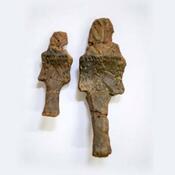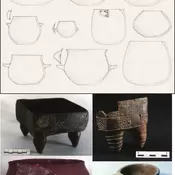Es gibt noch keine deutschsprachige Anmerkungen. Präsentiert wirden Anmerkungen auf English.
This fortress was built for military monitoring/defense in Bosphorus.
After the bebek the Bosphorus diminishes to its narrowest point, about 700 meters. The village of Rumeli Hisari is dominated by and takes its name from the Castle of Rumelia Built by Fatih Mehmet in 1452, the tear before he conquered the city.
The great fortress of Rumeli Hisar, built by the Sultan Mehmet II in the year of 1452,immediately opposite Anadolu Hirasi, the Anadolu Hissar built by Yildirim Beyazit I sixty years earlier. It was the first step in Mehmets plan to capture the Byzantine capital, for with a fortress on either side of the Bosphorus.
Mehmet had sent out orders throughout his Empire for 1000 skilled mason and 2000 workmen to assemble here in the spring, wood and building stone to be collected. Stone was brought from Anatolia. Mehmet himself laid out the design, dictated by the lie of the land, and each of his three Vezirs. the Grand Vezir, Candarli Halil Pasa, Zaganos Pasa, and Saruca Pasa was made responsible for building a tower, while the Sultan himself undertook the walls and bastions, introducing a healthy sprit of competition.
It was complited a garrison of 400 Janissaries was stationed in it . and here they tried out the range of their new cannons by training them on any ships rash enough to try to pass.
After the Conquest the fortress found a new role as a prison, before gradually falling into disrepair.
In 1953, 500 years after the Conquest, Rumeli Hisar Fortress was well restored, and the space inside laid out with lawns and paths. The cistern on which the mosque once stood still marked by the stump of its minaret was opened up and converted into an open air theatre where plays and folk dancing are performed during the summer, especially at the time of the Istanbul Festival.
Official Website: https://muze.gen.tr/muze-detay/rumeli
This fortress was built for military monitoring/defense in Bosphorus.
After the bebek the Bosphorus diminishes to its narrowest point, about 700 meters. The village of Rumeli Hisari is dominated by and takes its name from the Castle of Rumelia Built by Fatih Mehmet in 1452, the tear before he conquered the city.
The great fortress of Rumeli Hisar, built by the Sultan Mehmet II in the year of 1452,immediately opposite Anadolu Hirasi, the Anadolu Hissar built by Yildirim Beyazit I sixty years earlier. It was the first step in Mehmets plan to capture the Byzantine capital, for with a fortress on either side of the Bosphorus.
Mehmet had sent out orders throughout his Empire for 1000 skilled mason and 2000 workmen to assemble here in the spring, wood and building stone to be collected. Stone was brought from Anatolia. Mehmet himself laid out the design, dictated by the lie of the land, and each of his three Vezirs. the Grand Vezir, Candarli Halil Pasa, Zaganos Pasa, and Saruca Pasa was made responsible for building a tower, while the Sultan himself undertook the walls and bastions, introducing a healthy sprit of competition.
It was complited a garrison of 400 Janissaries was stationed in it . and here they tried out the range of their new cannons by training them on any ships rash enough to try to pass.
After the Conquest the fortress found a new role as a prison, before gradually falling into disrepair.
In 1953, 500 years after the Conquest, Rumeli Hisar Fortress was well restored, and the space inside laid out with lawns and paths. The cistern on which the mosque once stood still marked by the stump of its minaret was opened up and converted into an open air theatre where plays and folk dancing are performed during the summer, especially at the time of the Istanbul Festival.
Official Website: https://muze.gen.tr/muze-detay/rumeli


